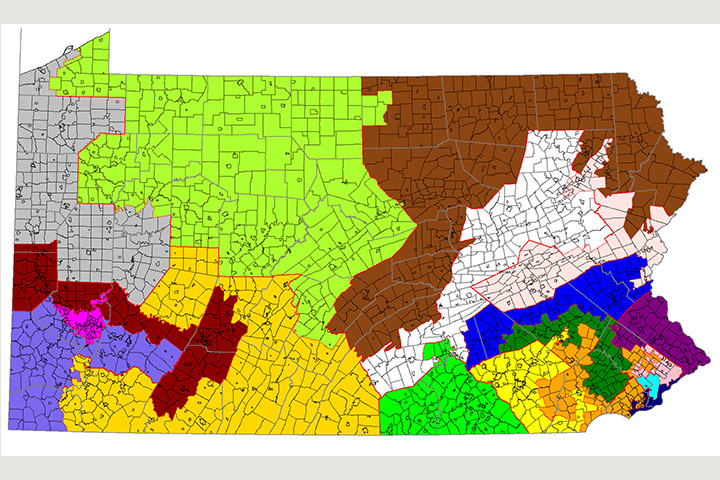A recent math lesson in Jon Kimmel’s Westtown School classroom is engaging students in civics, while also opening their eyes to the reality of politics.


A recent math lesson in Jon Kimmel’s Westtown School classroom is engaging students in civics, while also opening their eyes to the reality of politics.
“I saw our government is really, really corrupt,” Pennsylvania 8th-grader Siddhartha Sangwan told WHYY. “It’s not equal at all.”
Students were grouping shapes across a grid in Kimmel’s first period class recently when one student remarked that the exercise seemed “a lot like gerrymandering.” The off-hand comment—especially relevant as Pennsylvania lawmakers squabble over the state’s contentious congressional map—gave Kimmel an idea, and he soon challenged students to redraw the district boundaries using census data, basic math ratios, and percentages.
Initially, students assumed the project would be a difficult task, but they quickly realized “it’s not that difficult,” student Isaac Lind told the news site. “I mean, it didn’t take long for us to complete these maps,” he said.
In 10 class periods, students produced several new congressional maps with a variety of objectives.
“Some maps focused on creating an even split between the two parties or ensuring representation for racial minorities. Others aimed for geographic compactness, as measured by a class-created formula that compares a district’s area with its perimeter and then contrasts it with the shape of a square,” WHYY reports. “One especially interesting arrangement included large ‘multi-representative’ districts where an area would be assigned two or three congressional votes. The margin of victory in those area would determine the party of the representatives.”
Students at the Quaker school also crafted a map using random rolls of a die to draw district boundaries.
“The one that was generated randomly was way better” than the current map, student Daniel Seller-Johnston said. “That should say something about the current map.”
The multi-dimensional civics lesson not only exposed students to the current state of politics, but also illustrated they have the capacity to challenge, inform, and shape current policy. Ironically, feedback from policymakers has offered other lessons.
“They’ve sent their maps to some public officials and received positive feedback,” WHYY reports, “though apparently one political staffer in Harrisburg looked at their output and deemed it ‘too fair.’”
The Westtown lesson is one example of how schools play a critical role in forming engaged citizens.
James Davison Hunter and Ryan S. Olson, with the Institute for Advanced Studies in Culture, summarize research into character education in a variety of schools in The Content of Their Character:
[C]haracter is constituted by the enactments of moral ideals espoused within a tradition and enacted within the institutions of particular communities.
Westtown students are taking up non-partisan ideals of equity in the context of a living tradition—the Quaker values of “peace and justice in the community and in the world.” Students are learning citizenship through practice, and it’s developing active citizens the country desperately needs.
Educators interested in engaging students in civics can look to online resources like iCivics, which offers a wide range of possibilities.
For further reading on CultureFeed